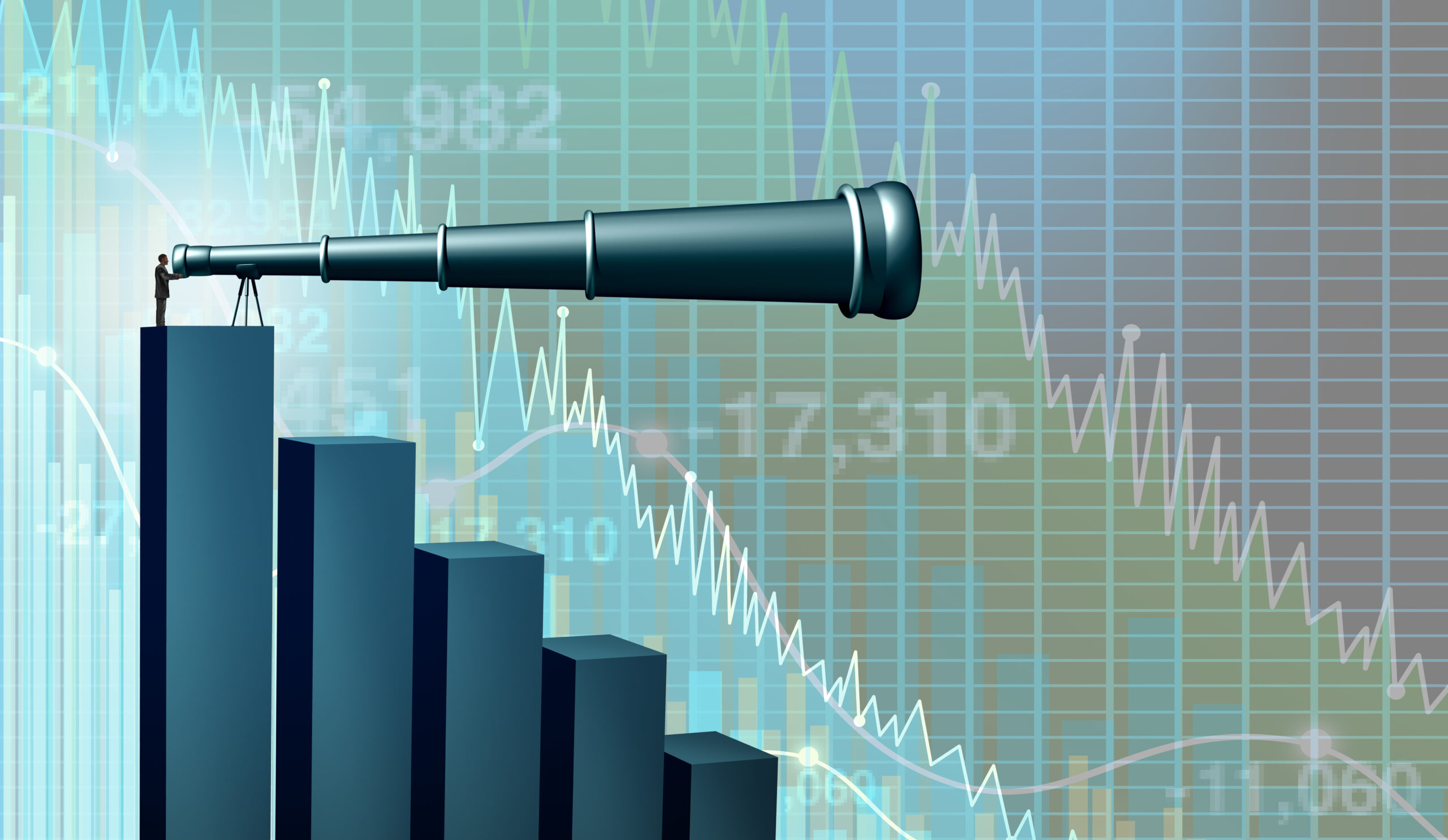Economy
Greatest Risk to Today’s Economy? The FED Despite Turbulence, Recession Remains Unlikely in 2023

Today’s Maladies Are Symptoms Of A ‘Stimulus Hangover’ Not Drivers Of A Downturn; California Finally Recovers All Jobs Lost To Pandemic
A leading economic forecast does not see a downturn in 2023 as assured, or even likely, as long as the Fed doesn’t drive one. According to Beacon Economics‘ latest outlook for the United States and California, today’s ailments are symptoms of a hangover from the over stimulus that was injected into the U.S. economy during the pandemic, not signs of deeper weakness or triggers of a near-term recession.
“Today’s economy is running at full speed, the exact opposite of what economists call a recession, when an economy produces less than it is able,” said Christopher Thornberg, Founding Partner of Beacon Economics and one of the forecast authors. “The United States is not struggling with a lack of demand; we’re struggling to meet demand.”
The new forecast points to the fact that the U.S. economy has added 4 million payroll jobs since the start of the year, that the unemployment rate remains well below 4%, that the job openings rate is well above its pre-pandemic peak, that industrial production is at a record high, that manufacturing orders are still rising as inventories remain low, that corporate profits have started to climb, and that consumers continue to spend, spend, spend – all signs that the economy is operating at capacity.
According to the outlook, today’s maladies of high inflation, declining asset prices, rising interest rates, and a turning housing market are symptoms of an economy ‘cooling’ back to normal after being overstimulated by the Federal government during the pandemic, not any fundamental deficiency in the system. Indeed, some of what is happening today is bringing numbers that hit record high levels over the past couple of years, such as stock market values and housing prices, back down to earth.
“Stock markets today are still 15% to 20% above where they were pre-pandemic, and even if home prices fell by 20%, which is highly unlikely, they would still be 20% above where they were before COVID hit,” said Thornberg. “Some of this is a recalibration – we need to recognize that and not panic.”
However, the new outlook’s call for ‘no recession in 2023’ comes with a big caveat: the Federal Reserve. If the Fed continues to raise rates until something truly snaps in the lending markets, they could needlessly drive a downturn, according to the forecast. If, on the other hand, they start to moderate, the economy will likely ride out the bumps caused by inflation and asset price declines and achieve the proverbial ‘soft landing’, meaning that the post-pandemic expansion will continue, but at a slower rate.
“While we don’t see a recession as an assured outcome as many other forecasts have suggested, we certainly acknowledge that bad choices by policymakers in the months ahead could set one off,” said Thornberg. “Today’s economy is indeed fragile and highly susceptible to a large negative shock, such as rapidly rising rates, but that die is not cast yet.”
Additional Key Findings:
- In the housing market, there is no debt crisis behind today’s repricing (unlike prior to the Great Recession) meaning it won’t have much of an impact on the broader economy. What happens in real estate will stay in real estate this time around.
- U.S. households are sitting on over $4 trillion in checking account balances, almost five times as much as pre-pandemic. Consumer demand will remain strong based on wealth effects alone, which will help carry the economy into 2023.
- Consumers may be starting to indulge in too much new debt, but the rapid interest rate spike will prevent a dangerous build-up.
- While the overall consumer economy is healthy, inflation causes transfers of real wealth—from savers to borrowers, from those on fixed incomes to those on variable ones—and some households will be hurt.
- California reached a key milestone in October 2022: The state finally recovered all the jobs lost due to the pandemic-driven shutdowns. Because of its heightened worker shortage, it reached this goal more slowly than the U.S. as a whole and more slowly than many other states. “Typically, there are more unemployed workers in California than there are job openings, but since the outbreak of the pandemic, that status quo has been turned on its head,” said Taner Osman, Research Manager at Beacon Economics and one of the forecast authors. “Today, employers in the state are struggling to hire the workers they need.”
- Currently, the number of homes that have sold in California stands at around half the level it was in 2021 and is approximately one-third lower than during the years immediately prior to the pandemic.
- The pandemic has accentuated one of California’s most troubling long-term trends: the divide between coastal and inland regions. Since 2000, the number of housing units in the state’s inland communities has grown at three times the rate of coastal communities; at the same time, inland communities have added jobs at three times the rate of coastal areas.
View the new The Beacon Outlook including full forecast tables here.
Business
Economist Christopher Thornberg, State Treasurer Fiona Ma Headline New Forecast Conference

Coming October 5th
Economic Horizon 2024: What Lies Ahead?
The Inland Empire Regional Chamber of Commerce, in collaboration with Beacon Economics and the County of San Bernardino, is thrilled to announce that the anticipated economic forecast conference, Economic Horizon 2024: What Lies Ahead, Inland Empire? will be held October 5th from 3:30 PM to 6:30 PM at the El Prado Golf Courses in the vibrant city of Chino, California.
Esteemed economist, Dr. Christopher Thornberg will present complete outlooks for the U.S., California, and Inland Empire economies. “The Inland Empire stands at the crossroads of remarkable economic opportunities and challenges,” said Thornberg. “I’m excited to unpack the trends and shifts that will define the region’s economic landscape in the next year, and beyond.”
Known for his razor-sharp observations, and fun, energized delivery, Thornberg’s presentation will include pointed discussions about inflation, the Fed’s next move, housing markets, strengths and instabilities in the economy, and what current trends mean for the nation, state, and local region.
The conference will also be graced by the insights of California State Treasurer Fiona Ma as keynote speaker. In her words, “The strength of California’s economy is deeply interwoven with the growth trajectories of its regions. The Inland Empire, with its dynamism and resilience, is a testament to this synergy. I am honored to join ‘Economic Horizon 2024’ and share a vision where policies, partnerships, and potentials converge to elevate the Inland Empire to unprecedented economic heights.”
“This conference is a testament to the collaborative spirit of the Inland Empire and our commitment to fostering a robust, resilient economy,” said Edward Ornelas, Jr., President of the Inland Empire Regional Chamber of Commerce. “Our partnership with Beacon Economics and the County of San Bernardino aims to offer a platform for profound economic discussion, forecasting, and strategic future planning.”
Attendees can anticipate not only expert insights into the economy but also networking opportunities and a chance to connect with key business, government, and nonprofit leaders from across the region.
Full event details are available at: economy.iechamber.org
Economy
The Recession That Didn’t Happen… And Why Most Forecasters Got It Wrong
Bizz Buzz
Workforce Development Earns National Achievement Awards

#bizzbuzz
Inspired by the Board of Supervisors’ commitment to meet the needs of employers and jobseekers and foster a vibrant local economy, the San Bernardino County Workforce Development Department has been honored with eight 2023 Achievement Awards from the National Association of Counties (NACo).
Among the services and initiatives for which WDB was honored were the Rapid Response Community Resource Fair, Economic Recovery Business Outreach Program and, in partnership with the Public Defender’s office, the Record Clearing, Resource and Employment Fairs.
Thanks to strong and stable leadership and policy direction from Board of Supervisors Chair Dawn Rowe and her colleagues on the Board of Supervisors, San Bernardino County received a record-breaking 160 NACo awards this year. The awards reflect the Board’s efforts to cultivate the innovation that leads to the development of outstanding public service programs.
The NACo awards recognize the best of the best among county governments across the U.S. Nationwide, 40,000 county elected officials and 3.6 million county employees provide important services, such as caring for our physical and mental health, maintaining roads, ensuring public safety, strengthening environmental stewardship, administering elections and much more.
“The Workforce Development programs and services recognized by NACo highlight the extraordinary work being done by Workforce Development to enhance career opportunities for our residents and help businesses grow,” Rowe said.
The first Rapid Response Community Resource Fair was developed shortly after United Furniture Industries (UFI) abruptly laid off more 300 employees in the High Desert without advance notice just days before Thanksgiving 2022. When Workforce Development was alerted, staff quickly mobilized businesses and community partners to help connect those laid off to available employment opportunities, as well as various other community resources. Approximately 275 of the affected UFI employees were offered new employment opportunities as a result.
The Economic Recovery Business Outreach Program was a pilot program that tapped into the wide-reaching business network of chambers of commerce. This collaboration between WDB and various chambers of commerce throughout the county was designed to leverage the relationship between chambers and small businesses to build awareness and accessibility to Workforce Development services available to them. Outcomes as a result of this partnership include various successful services including job listings, job fairs, positions filled, and job training assistance, among others.
Perhaps the most impactful program receiving this recognition is the Record Clearing, Resource and Employment Fairs. Workforce Development and the Public Defender’s Office have partnered with businesses and community organizations to increase economic access and equity. The partnership was designed to bring critical resources directly into the community – to churches, community centers, community colleges, and America’s Job Centers – for those looking to remove barriers and increase their access to employment opportunities and other services. The Public Defender helps participants by providing expungement or record clearing services, and Workforce Development brings employers with job opportunities, all within the same location. The events have been well received and proven useful to the community, making this a long-term partnership, not only between Workforce Development and the Public Defender’s office but a long list of other community organizations that have also participated.
“Our team and board feel fortunate to be recognized for these awards,” said William Sterling, chairman of the Workforce Development Board. “The underlying factor of the programs being recognized are partnerships. We feel fortunate for our staff and the relationships developed with other departments and organizations and the impact these services have had within our communities, which is at the core of what public service is supposed to be.”
-

 Opinion1 month ago
Opinion1 month agoSurge in Unemployment Among California Youth Linked to Minimum Wage Hikes
-

 Commercial Real Estate Transactions3 weeks ago
Commercial Real Estate Transactions3 weeks agoSRS Real Estate Partners Announces Record-Breaking $6.15 Million Ground Lease Sale of a New Construction Chick-fil-A Property in Murrieta, California
-

 Health & Wellness3 weeks ago
Health & Wellness3 weeks agoBuddha Bars: A Mother’s Innovative Solution to Healthy Snacking
-
By Press Release1 week ago
California Employment Expansion Continues But Still Trails Nation









